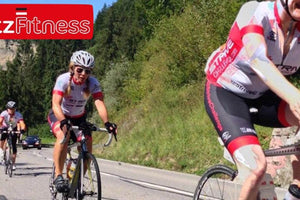
If you spend a lot of time training at high altitude in a mountainous region, would your performance be better racing at sea level? How do you train to race at high altitude? These questions and more will be answered as we explore the performance differences between training at high altitude vs sea level.
How does altitude training work?
Altitude training works because the air is thinner. As the air is thinner at high altitude, with every breath you take you are delivering less than usual amounts of oxygen to your muscles. Your muscles need oxygen to work optimally, so less oxygen means your body needs to work harder to get the same results. There have been many studies done to try to determine if altitude training works, and if so, how high an athlete would need to train, but research is ongoing.
So what is considered 'high altitude'? There are many differing opinions, but the most common is that any altitude above sea level beyond 3000m (9840 feet) is considered “high” altitude, with 500-2000m being “low” altitude and 2000-3000m being “moderate” altitude. Anything above 5500m (think Mount Kilimanjaro) is considered “extreme” altitude!
There are cities in South America, like La Paz in Bolivia, which are situated at this 'extreme altitude' where the air is much thinner than at sea level and the locals have adapted to the conditions. So, if an athlete were to train consistently in a city like La Paz, would they be faster when racing at sea level because of their better conditioned lungs and muscles? Well, in order to imitate the conditions found in such extreme altitudes, many athletes train with altitude masks. So, do they work?

Do high altitude training masks work?
Altitude training masks work by reducing the airflow to the lungs. In reality, they don't actually simulate high altitude because they do not reduce the atmospheric pressure, and instead simply reduce the oxygen intake in the same way running with a straw in your mouth would (definitely don't do this!)
It would take months or even years of training in a high altitude city like La Paz to notice the benefits of high altitude training. Unfortunately, training in a high altitude mask would not have these effects. There actually isn't any evidence whatsoever that training in an altitude mask benefits your athletic performance. However, actually training at high altitude can.

How long do the effects of high altitude training last?
Experts have agreed that training at 2200m for 4 weeks is optimal altitude training. Once you finish your training, the effects of the reduced oxygen on your blood and muscular endurance can last up to 2 weeks. So, is it worth it? Well, if you're a serious athlete looking to push your own boundaries and are looking for any way to improve your training, finding a training camp in the Alps or other mountainous regions could be beneficial, but the effects will wear off eventually.







